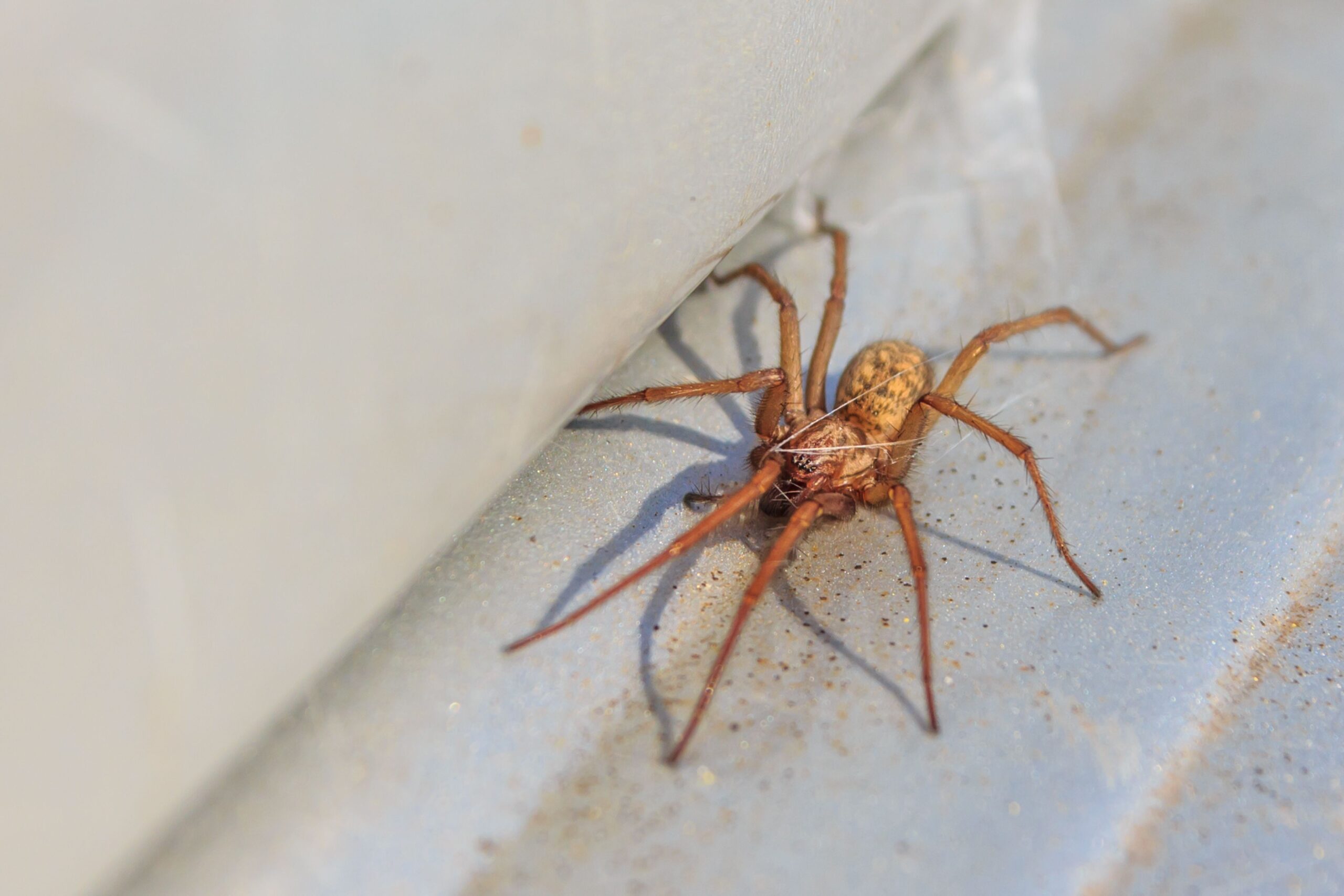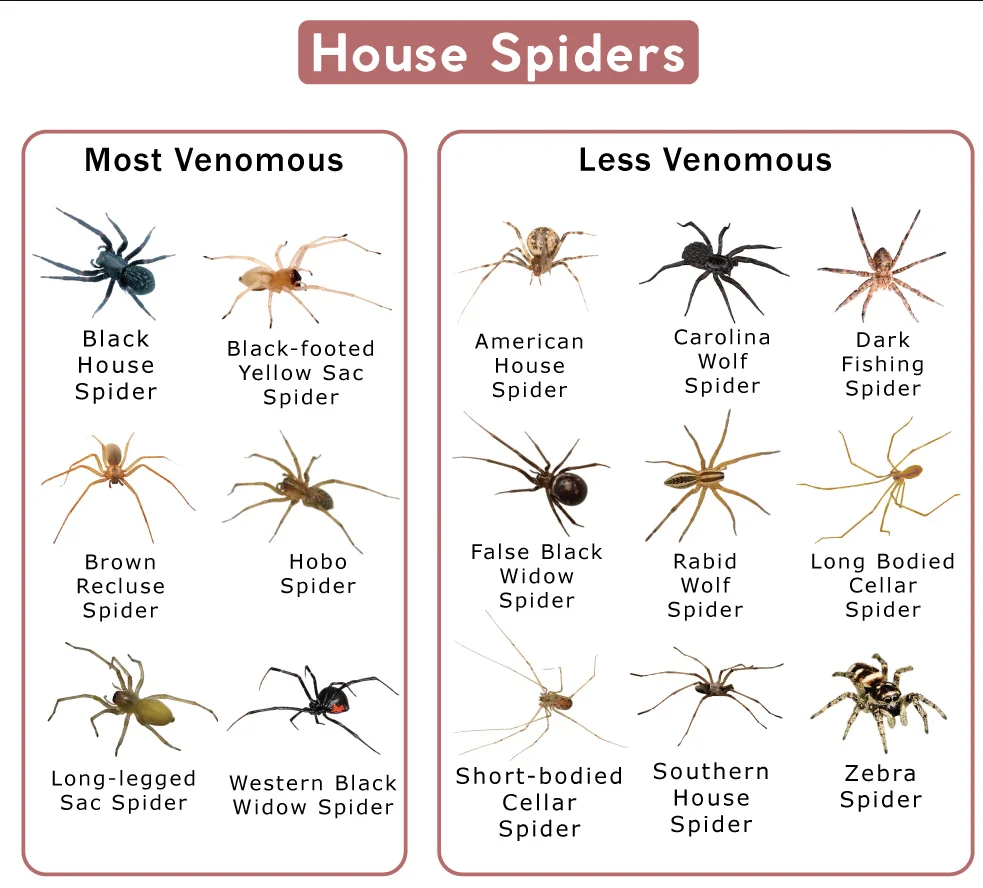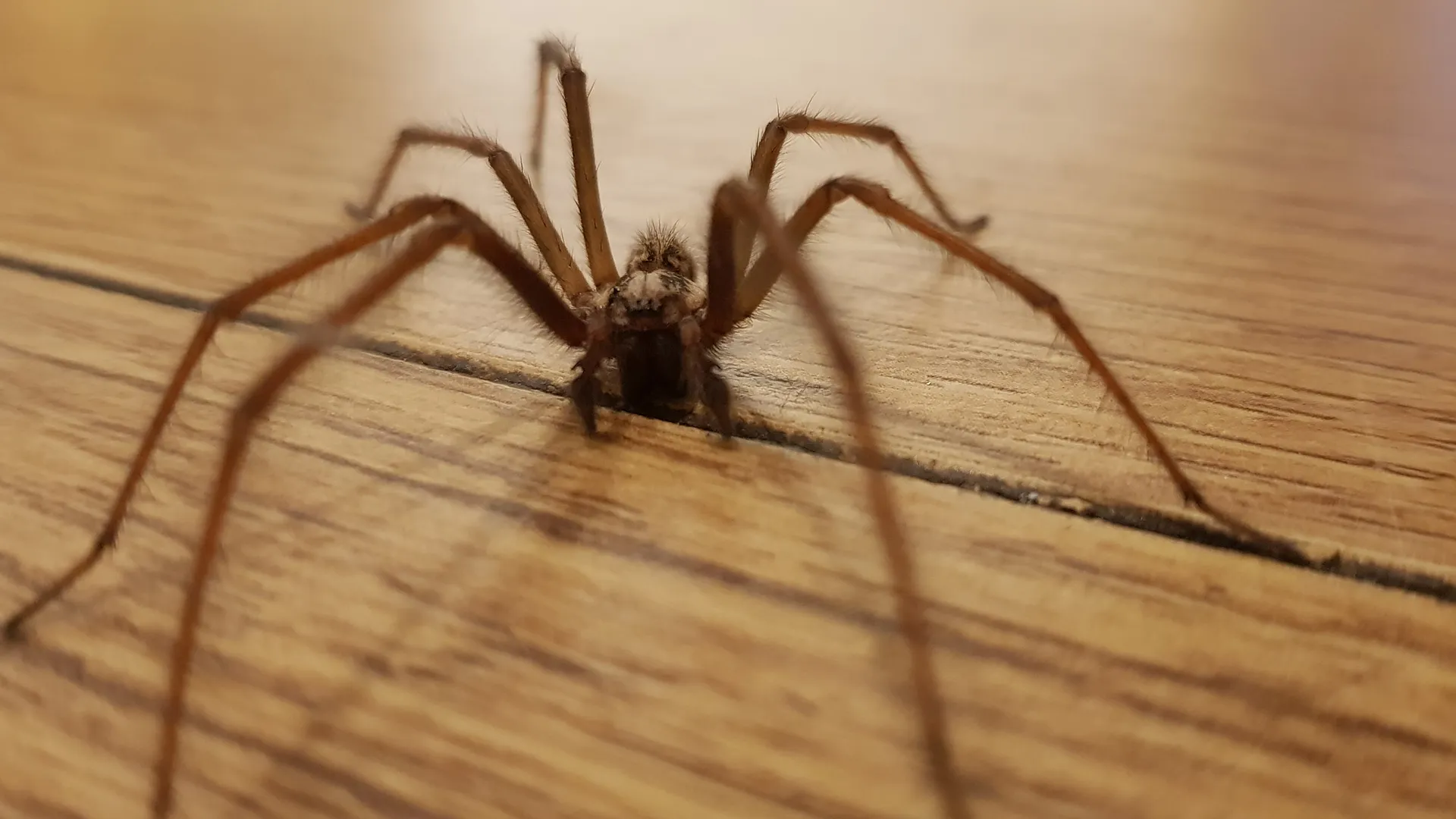Spider Treatments in Florida
Exterminator Services for Boynton Beach, Lake Worth, and Lake Worth Beach
Florida’s subtropical temperatures and near-constant humidity sustain a wealth of insects that form the natural diet of many spider species. While some spiders are appreciated for helping manage unwanted bugs around houses or businesses, their growing numbers can sometimes transform from helpful neighbors to sources of unease or potential venom threats. Residents and property managers in Boynton Beach, Lake Worth, and Lake Worth Beach may discover webs in their corners, eaves, or outdoor living spaces—underscoring the need for a spider exterminator who can assess the situation and provide targeted spider treatments. This service page walks you through why spiders thrive along Florida’s coast, how to recognize signs of a spider influx, and which steps best eliminate or reduce arachnid populations in and around your property.
Why Spiders Thrive in Florida

- Warm, Year-Round Climate
In cooler states, prolonged cold snaps force many spiders to slow breeding or venture indoors for survival. Florida’s mild winters seldom dip low enough to hinder breeding cycles, letting spiders remain actively reproducing and feeding all year. Even brief chilly fronts rarely spur a major population decline, meaning spider numbers typically remain robust in coastal and suburban locales. - High Humidity and Occasional Rain
Many spider species target insects that flourish in humid or damp environments. Florida’s coastal air and regular rainfall encourage insects to gather around wet vegetation, near standing water, or wherever consistent moisture is present. This creates steady feeding opportunities for spiders, who build webs or hunt prey in these zones, particularly where yard irrigation or landscaping fosters abundant insect life. - Plentiful Prey
From mosquitoes to beetles, Florida supports a wide array of bugs. Certain spider species build intricate webs, while others prowl on the ground—either way, abundant insect prey helps them multiply. If an area experiences an uptick in flies, roaches, or other bugs, spider numbers may also climb to capitalize on these easy meals. - Suburban and Waterfront Development
Coastal areas like Boynton Beach, Lake Worth, and Lake Worth Beach blend multiple habitats—urban settings, waterways, and natural green spaces. Construction or newly disturbed lots can prompt spiders to relocate onto building exteriors, while older properties with overgrown shrubs or yard debris can serve as prime nesting grounds if left unattended. - Minimal Seasonal Dormancy
Elsewhere, harsh winter temperatures freeze ground surfaces or reduce insect availability, effectively pushing spiders into dormancy. Florida’s mild environment, by contrast, maintains enough warmth and insects that spiders can mate and produce egg sacs nearly any time—turning even a minor spider presence into an established colony over a few months.
Identifying Spider Activity
- Frequent Webs
Discovering multiple webs in corners, behind furniture, or around porches may reflect a rising spider count. While a lone orb-weaver outside might be harmless, a dense array of webs near entryways or in bathrooms can disrupt daily life. Some webs may contain visible egg sacs—small silken pouches containing dozens or hundreds of spider eggs. - Sightings of Concerning Species
Although many Florida spiders are non-threatening, seeing black widows or brown widows with distinct hourglass marks often prompts immediate action. Similarly, large wolf spiders scurrying through living spaces can startle occupants, even though bites are rare when unprovoked. - Bites or Allergic Reactions
Some individuals develop significant red welts or itching from spider bites. If multiple unexplained bites occur, verifying if a venomous species might be present becomes important. Because it is tricky to determine which spider inflicted a bite, thoroughly checking sleeping areas, footwear, and corners is prudent. - Egg Sacs
Spiders frequently deposit egg sacs in nooks, corners, or hidden surfaces. These sacs can hatch sizable broods, unleashing baby spiders that scatter around the property. Spotting these sacs underscores a need to remove them swiftly and check for adult spiders that produced them. - Musty or Neglected Storage Areas
Spiders lean toward quiet, dim corners—garages, sheds, under decks—that see minimal foot traffic. Regularly checking these areas can reveal if webs, egg sacs, or clusters of spiders indicate a larger presence.
Risks of Prolific Spider Populations
- Potential Venomous Bites
While many Florida spiders pose little threat, black or brown widow bites can be painful and possibly medically concerning. Rare species, such as brown recluse (less common in coastal South Florida), also prompt caution. Minimizing these species in high-traffic areas helps keep families safe. - Allergy or Phobia Concerns
Arachnophobia—fear of spiders—is common. Multiple webs in doorways, windowsills, or near bedding can heighten fear or even deter normal property usage. Reducing spider presence fosters a calmer environment. - Uncomfortable Guest or Customer Impressions
In commercial or hospitality settings—hotels, restaurants, shops—visible spiders and webs can undermine cleanliness standards. Swift removal avoids negative online reviews or client complaints about perceived lack of maintenance. - Egg Sac Hatching
A single, unnoticed egg sac can spawn numerous spiderlings, intensifying a small outbreak into something far more visible. By the time newly emerged spiders scatter, removing them becomes more complicated.
Why Early Spider Treatments Matter
- Containment of Infestations
Spiders rarely remain confined to one web if insect populations flourish. Catching an issue early prevents them from building multiple webs across eaves, garages, or living rooms, complicating cleaning and comfort. - Public Health and Safety
Although spider bites are unusual, any presence of venomous species raises legitimate concerns. Quick action ensures residents avoid bites when rummaging in sheds, picking up stored items, or stepping outdoors barefoot.
Stress Reduction
For those anxious around spiders, the knowledge of numerous webs nearby can erode peace of mind. Rapid extermination measures and follow-up checks create reassurance that the problem is contained.

Our Spider Exterminator Strategy
- Inspection and Species Identification
A professional exterminator first examines both indoor and outdoor areas, mapping web placements, egg sacs, and potential insect prey hotspots. Distinguishing between harmless orb-weavers or wolf spiders versus black widow variants tailors the approach and insecticides or removal techniques. - Targeted Treatments
Rather than indiscriminately spraying entire yards, experts apply specialized products in high-traffic spider zones—like corners, crevices, or eaves. Insect growth regulators may also reduce the insect prey that supports spider populations. When venomous spiders are found, immediate spot treatments or removal safeguard occupant safety. - De-Webbing and Physical Removal
Physically removing webs and egg sacs disrupts spiders’ breeding cycles and denies them established traps. In some cases, a homeowner might only need to handle minor web clearing, but extensive infestations call for systematic de-webbing indoors and along exteriors. - Yard Modifications
Because heavy vegetation or neglected landscaping fosters insect breeding, which in turn feeds spiders, minor yard adjustments can help. Trimming shrubs away from walls, discarding leaf litter, and redirecting lighting that attracts flying insects all reduce spider draws. - Follow-Up Visits
Egg sacs may hatch post-treatment. Scheduling a re-check ensures newly emerged spiderlings or overlooked webs receive removal. If fresh webs are discovered, exterminators refine the plan before populations rebound.
Service Areas: Boynton Beach, Lake Worth, and Lake Worth Beach
Boynton Beach: A coastal hub where scenic neighborhoods mix with busy retail corridors. Improperly sealed eaves or yard debris can attract insects, and by extension, spiders. Maintaining exterior walls, thorough yard cleaning, and systematic pest checks keep spider webs to a minimum.
Lake Worth: Known for its eclectic vibe and older buildings, Lake Worth can harbor spiders in seldom-renovated attics, crawl spaces, or yard corners. Enhanced vigilance in older homes with multiple cracks or exposed beams wards off spider intrusions and potential venomous species.
Lake Worth Beach: Renowned for its coastal charm and tourist-friendly atmosphere, Lake Worth Beach faces consistent foot traffic and occupant turnover in rental spaces. Quick, professional spider management helps property owners avoid guest complaints while preserving a welcoming beachside ambiance.
Why Select Our Spider Treatments
- Local, Climate-Focused Methods
Florida’s near-constant warmth demands a year-round approach. Our approach accounts for continuous insect prey and minimal spider dormancy, ensuring you’re covered whatever the season. - Precision and Reduced Environmental Impact
By identifying spider hotspots before applying products, we minimize chemical usage. De-webbing plus targeted insecticide applications fosters a safer environment for residents and beneficial insects alike. - Customized Solutions
Not all properties share the same landscaping or building features. Orb-weavers near a front porch do not necessarily call for the same responses as black widows nesting in a garage corner. Adjusting the plan ensures thorough coverage where needed. - Educational Emphasis
Thorough spider control includes guiding property owners on adjusting exterior lighting, trimming vegetation, or improving yard drainage to limit insect breeding sites. Fewer insects mean fewer spiders, boosting long-term results. - Follow-Up Assurance
Because newly laid eggs might hatch after initial treatments, scheduling re-checks helps confirm no leftover spiderlings linger. If any remain, a second wave of spot treatments addresses them before they mature and spin new webs.
- Local, Climate-Focused Methods

Call to Action
If you keep encountering spider webs in corners or suspect potentially venomous species—like black widows—near your living or working spaces in Boynton Beach, Lake Worth, or Lake Worth Beach, do not wait. Contact us to learn more or schedule your service. Our spider exterminator methods cover all phases, from thorough property assessment to specialized spraying and thorough de-webbing, ensuring your comfort and safety.
Acting swiftly prevents webs from spreading in high-traffic areas, curbs the risk of bites, and eliminates the unease caused by excessive spider sightings. Rely on local expertise that accounts for southwestern Florida’s climate and pest ecology, giving you the confidence that your environment remains a secure, arachnid-limited haven.
Maintaining a Spider-Free Lifestyle in Florida
In southwestern Florida’s warm, humid climate, continuous insect presence is the key driver of spider abundance. A robust plan, blending professional treatments with simpler yard and household strategies, can keep spider numbers manageable year-round:
- Regular Yard Maintenance: Trimming bushes, removing leaf piles, and redirecting bright lights away from doors minimize spider attraction.
- De-Webbing: Periodically removing webs from outdoor corners or interior ceilings, especially near entryways, discourages re-usage by returning spiders.
- Reducing Insect Populations: Managing other pests (like roaches or mosquitoes) indirectly lowers spider feed sources, making your property less appealing to them.
- Monitoring & Quick Response: Observing new webs, egg sacs, or suspicious spider sightings and alerting a specialist if venomous types appear maintains control.
By committing to these everyday measures and promptly requesting spider treatments when webs multiply, property owners across Boynton Beach, Lake Worth, and Lake Worth Beach can enjoy living or working near Florida’s scenic coastline with fewer unwelcome eight-legged visitors. In the end, thorough spider management merges swift intervention with consistent upkeep, ensuring that the state’s beauty and mild weather remain a source of enjoyment rather than a haven for arachnid infestations.
